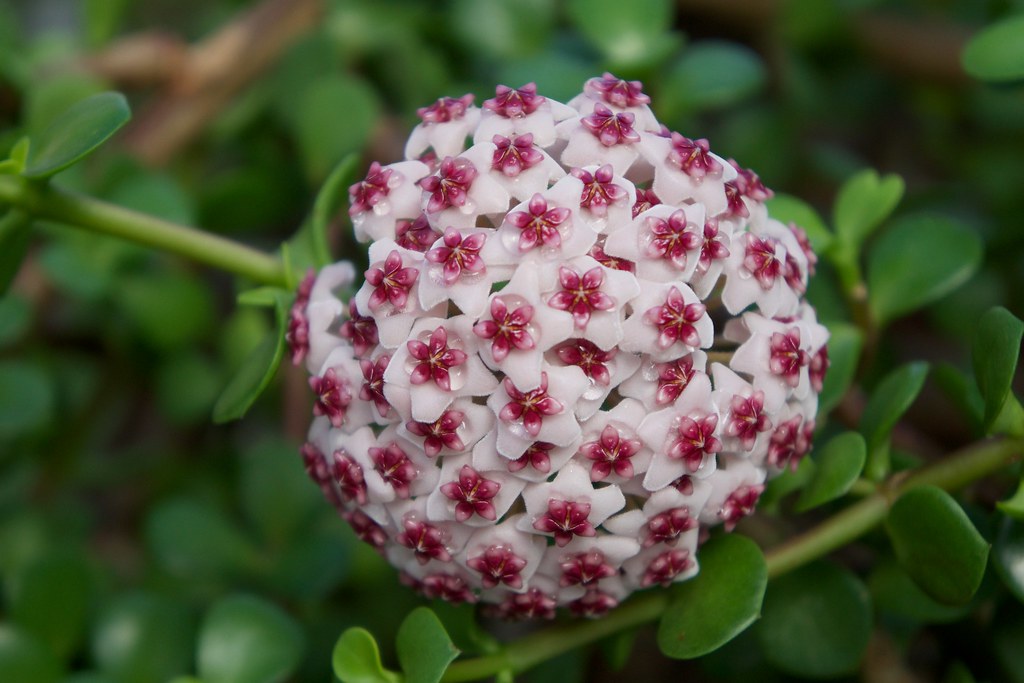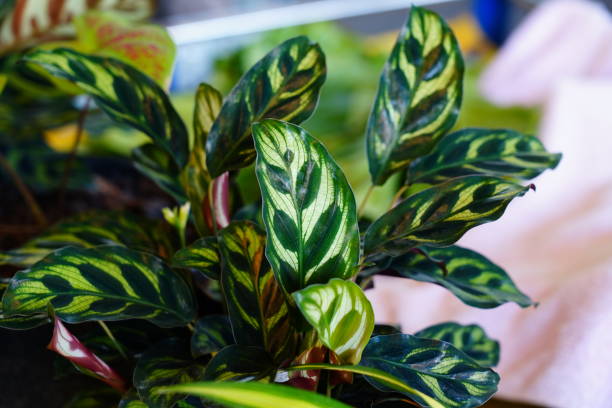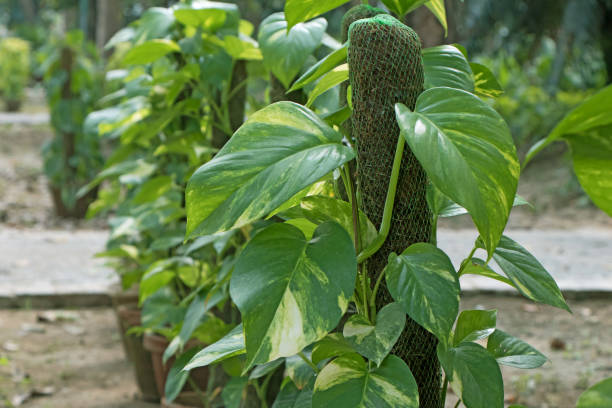Types of Hoyas To Add a Colorful Touch to Your House

Are you a plant person seeking a new exploration? Then stop not and analyze the surreal characteristics of various types of hoyas. These hoya varieties will surely work like a delight as your potted plants. Hoyas, widely known as porcelain flowers or wax plants, have gained popularity as beloved indoor plants.
Types of Hoyas to Decorate Your Place
Whether you are a beginner or an experienced gardener, you would want to bring this plant to your home beyond any doubt. And, now you must be thinking, why is that? Then, you must know that the hoya varieties are cherished due to their unique shape, size, wonderful flowers, and seraphic fragrance. Intriguing, huh? Well, if you want to dive deep into different Hoya varieties, go through the mentioned list.
Hoya Bilobata
When it comes to maintenance, Hoya Bilbota can be one of the fussy plants in the types of Hoyas. Native to the Philippines, this tiny perennial plant can stretch upto 24 inches and yields lovely red flowers. These red cuties emit a pleasant odor at night which would leave you in awe of their wondrousness.
When it comes to the fundamental care tips, you can create a perfect potting mix by combining sphagnum moss, perlite, and orchid bark in uniform proportions. This mix will help balance the PH levels of the soil. Furthermore, it allows enough drainage and prevents unnecessary decay of roots.
You would be surprised to know that Hoya Bilbota thrives when placed in a comparatively smaller pot. Moreover, these plants likely dry out now and then; if that being the case, the terra-cotta pots would do for you. Now, if you prefer to keep your houseplants outdoors, then it would be safe to place them in a bright, shaded area. However, if you like them indoors, then it is recommended to set it in an area exposed to bright but indirect light.
Furthermore, you should know that Hoya bilbota hates sitting in water, so always avoid overwatering. When it comes to temperature, it is suggested that they should be kept between 60-96 Fahrenheit. Based on the rationale, it comes as no wonder why various horticulturalists have added it to their collection; therefore, Hoya Bilobata is included among one of the cherishable types of Hoya.
Hoya Burtoniae
With fascinating foliage and waxy flowers, Hoya burtoniae have reclaimed their popularity as indoor plants. Although the flowers emit a strongly scented aroma, the evergreen climber is more than suitable to create a beautiful view.
You should know that if the temperature in your region is high and mighty, you must place these in a bright warm room and avoid direct sunlight at all costs. Belonging from the dogbane family, Hoya Burtonaie is a vining epiphyte and makes quite an easy pot plant. Moreover, it is one of the types of hoyas best suited as a hanging basket.
The star-shaped flowers are covered in tiny hair and give a fuzz-like appearance. You must use a very well-drained soil mix and repot the plant at least once a year with the coarse, well-filtered substrate. For better outcomes, you must water Hoya burtoniae thoroughly, allowing an excess of water to drain. To prevent root decay and waterlogging of the soil, you should never allow the plant’s roots to sit in standing water.
Hoyas are temperamental in nature, so you must give them some time to adjust to the surroundings.These plants stretch out leafless vines, which are basically the result of stress during leaf production. The stress could be due to several reasons like overwatering, varying temperatures, etc. However, these vines can occasionally develop into beautiful foliage and captivate the attention of viewers. Although it is considered misshapen, it gives an incredible view of your house’s interior through architectural ornamentation.
Hoya Latifolia
Hailing from the family of Apocynaceae, Hoya Latifolia has its origins in countries like Indonesia and Malaysia. It is one of the best types of Hoyas. The structure of its leaves resembles the plate you eat off, and it is also known as “dinner plate hoya.” How so? You must be wondering. That is because it has huge and round leaves like saucers.
Moreover, Latifolia has flowers in a ball-shaped structure that appear as if they are made from wax. What a marvelous species to gaze at? Hoya Latifolia throws huge leaves and flowers in abundance. Although it requires a lot of space and is not a quick grower, you can reap some wonderful fruits with a little hard work. This type of hoyas requires shade/filtered light and adequate drainage.
Pro tip: Ensure that you don’t water the plant in sips but deeply so that it is saturated throughout the rootball. This is essential to avoid the amassing of mineral salts.
Besides lovely flowers and leaves, you would be surprised to know that the epiphyte doesn’t need any fertilization at all. In this case, store-bought organic manure and decomposed leaf and bark matter work just fine. When the temperature is concerned, the epiphyte flourishes at 70 degrees Fahrenheit for an extended period.
However, this type of Hoya can not sustain and often dies under 55 degrees, so raising the plant above that is suggested. Maintaining humidity is also a vital element of plant care. As these belong to surroundings with moderate to high humidity, it is said that Hoya Latifolia thrives when exposed to intense monsoon. Are you a designing freak? Then, you would love to arrange them in a hanging basket with twining stems.
Hoya Australis
Looking for one of Hoyas’ easy-to-care varieties, then my friend, you are at the right place. The plant belongs to the Apocynaceae botanical family, and the plant can grow to long lengths if left unmowed. It is a widely popular garden and indoor plant due to its unmatchable fragrance and fancy white flowers. All you have to do is find a well-aerated, adequate draining potting soil mixture with enough sunlight in the active growing season.
Wax Vine, Porcelain Flower, and Honey Plant are some of the other names of this variety of Hoya. The flowers bloom in the late winter season and last throughout the summer. The species was first discovered by Europeans on the north-eastern coast of Australia in 1770. As per the Australian Native Plants Society, there are more than 200 species, and most of them belong to Australia (Source.)
For daycare, you have to choose the well-draining mixture to create an epiphytic situation for the plant to flourish. Moreover, you can boost the humidity levels in the greenhouse by keeping a water tank adjacent to it. Are you a lazy person? Cheer up! As you need to water the plant just once every ten days, and the plant has low to moderate water requirements. However, you must let the upper half of the potting mix wither out amid watering.
Just like other varieties of Hoyas, this one also embraces bright and indirect sunlight, but it does well in artificial lights. Therefore, they are best suited for places with minimal sunlight or small office spaces. If you do not want to hinder the growth of this variety of Hoyas, you have to maintain the room temperature above 16 degrees Celsius. However, in winter, it is recommended to keep the temperature between 13-15 degrees Celsius. Owing to the fact that they come from a high elevation, they thrive on cooler nights.
Hoya Kerrii
Native to the south-eastern part of Asia, Hoya Kerrii is widely known as “Hoya Hearts.” The Sweetheart plant is a rare and unusual plant with heart-shaped leaves. Those who are looking for something a bit odd or want to give a special gift to a plant enthusiast friend with a pinch of freshness should definitely buy it by today itself.
If you want to surprise your lover with a tee-hee gift, this type of Hoya with heart-shaped leaves will surely make an impact. Due to the fact that Hoya Kerrii has thick heart-shaped leaves, it is also called “Lucky-Heart.” Moreover, the plant has its origin in numerous countries like South China, Cambodia, Vietnam, Thailand, and Laos. Wanna know an interesting fact? The heart shape of the plant leaves makes it a must-buy on Saint Valentine’s Day in Europe.
Although people have showered a ton of affection for the sweetheart plant, however, there is a demerit associated with it. The complication associated with it is that the plant does not grow beyond one leaf.Hoya Kerrii has a long list of advantages associated with it.
In addition to being easy to propagate and cheap cultivation, the water requirements of Hoya Kerri are also significantly low. You love it. Don’t you? Yes, it’s absolutely right that it needs to be watered once a month. If you want to get it going nice and smooth, you must maintain the temperature between 18-27 degrees celsius. Given that, it becomes one of the easiest houseplants to look after and care for and lets you away with an occasional glance. So, if you are a huge romantic or an adventure freak,this type of hoya is the way to go for.
Hoya Linearis
Native to the Himalayas, the plant can stretch upto 2 meters outdoors, while it may only grow upto 0.5 meters when kept indoors. Given the fact that the plant belongs to a mountain region, it thrives outdoors and gives a curtain-like appearance when hanging in the basket.
The light green colored leaves are tender, succulent, pendant, and narrow with clusters of sweet-scented star-shaped white flowers, which provide a magical effect to the air. Moreover, you need not wait longer to watch it get big and adorable. The plant gains maturity within 3-5 years.
Beyond the warm, humid conditions and well-drained soil, Hoya Linearis doesn’t demand more. Although it is well suited for landscape use, it can also do wonders as a mounted plant. Do you want to show off the green foliage? Then this is the one you must go for. The leaves are softer, longer, and can entertain moderate watering. Well, isn’t that more than enough for an awesome indoor plant?
Avert the direct sunlight to prevent the leaves of Hoya Linearis from getting shriveled and damaged. Moreover, hanging plants like these do not survive in low-light conditions. So, it is wise to make sure that these types of Hoyas get enough light at the top so that they do not get bald and dry.
Final Words
When it comes to designing your interior, Hoya adds a surreal delight to the vision of your house. From Bilobata to heart-shaped charming Hoya Kerrii, there are numerous types of Hoya you can rely on.
Although there are several kinds of Hoya’s out there, it can get daunting to choose a suitable one for your house. Therefore, we have suggested some unique and popular varieties of Hoya that you can use to decorate your house.
Pick a hoya plant that suits your house’s interior style and resonates with you the most. Moreover, along with hoya, you can also try vertical gardening, to add a dynamic effect to your porch. Share your experience with us by dropping a comment.






